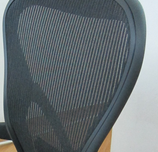A_User
#352
Mindblowing demo: John Link led a team of AI agents to discover a forever-chemical-free immersion coolant using Microsoft Discovery.
https://www.reddit.com/r/LocalLLaMA/comments/1kqu7dv/mindblowing_demo_john_link_led_a_team_of_ai/

A_User
#354
Does plastic in chairs etc shred microplastics that come into the body? What about paint on walls?
1 Like
they do, but it’s such a tiny fraction of room PM2.5 that I’m not too concerned
(it’s more what happens afterwards when many plastic chairs get disposed…)
3 Likes
A_User
#356
What about the “net” in e.g Aeron chairs?

Is there a benefit to using wood chair with cotton cushioning?
What’s the source of most microplastics in room air or that’s ingested by the body?
1 Like
Alternatively, carnivores may be accidentally ingesting more large MPs from their environment than are animals lower in the food web, potentially reflecting larger mouth/jaw sizes. The average number of MPs per gram of biomass across trophic levels and taxonomic groups was not significant, suggesting bioaccumulation may not be occurring.
The insects study - it’s polyester…
[herbivore insects that feed on decaying plant matter have higher MPs]…
Bill frist is concerned about the honeybees…
===
微塑料
1 Like
A_User
#359
All of our filtration systems prove highly effective at blocking microplastics, typically measuring between 5mm and 1 micron in size. Through rigorous testing, we’ve confirmed that our filters block an impressive 99.999% of microplastic particles in water.
LifeStraw Home products have been officially certified by NSF international through independent lab testing for the reduction of microplastics under their “Nominal Particulate Reduction, Class I” category which tests for particulate reduction at certain sizes. This is one of the only countertop filters on the market that has received this level of certification officially for microplastic reduction by NSF.
Prior to NSF establishing a protocol, we also had our products independently tested by IAPMO, an ANSI accredited independent lab which showed 99.999% removal of both 3 micron and 1 micron microspheres. The LifeStraw membrane microfilter was tested for removal of microplastics particles from drinking water following NSF/ANSI 401 and showed that our filters exceed the reduction requirement. Our testing follows stringent guidelines. We aim to be transparent in the performance of our filters and publish results on our website for each product. Our evidence dossier for our Home products can be found here.
LifeStraw’s Home Line of products are among the only household water filtration pitchers and dispensers with this membrane technology. In addition, LifeStraw’s water filter bottles are among the only water filtration everyday bottles guaranteed to remove microplastics because of the inclusion of the membrane technology.
Basically use a water filter to remove a lot of microplastics from water.
- Get an NSF-certified water filter
Switching to tap water from plastic bottled water will likely significantly reduce your routine exposure to plastics. But while the average plastic water bottle contains more microplastics and nanoplastics than tap, research shows that tap water may also be a source of microplastics.
Several of our water filter picks are specifically NSF/American National Standards Institute–certified to reduce microplastics, which means they’ve been rigorously tested in an accredited lab. They’re certified only to reduce since the filters cannot guarantee total elimination. Our picks include under-sink filters, such as the Aquasana AQ-5200, and the Brita Elite, a pitcher filter.
A_User
#360
@Neo @AlexKChen thoughts on EcoFiltro?
Made of clay, colodial silver, activated carbon.
Vitrified steel container for cleaned water (with color)
1 Like
Every single thing that is plastic sheds to some degree. When I hang up clothes on the washing line to dry I see micro particles come off them. If the clothes are polyester that means they are expelling microplastics into the air.
I would like to get all cotton clothing in the future but buying a whole new wardrobe isn’t cheap.
1 Like
Neo
#362
Any recent news in the last decade about it?
A_User
#363
It’s popular in South America, could only find news in Spanish.
I think it’s legit, just wondering if colored vitrified steel is bad in contact with water. Some people on reddit think this type of system is bad because of bacterial growth, but they brush it with colodial silver and put it inside the clay, and suggest cleaning in a specific way with a specific brush every 6 months.
1 Like
A_User
#364
It’s not worth it to to get the cheapest e.g cotton clothing either if there’s harmful chemicals etc used in the manufacturing process. So I might have to replace my wardrobe twice, lol.
Haha noooo. Can’t you just wash them a bunch of times to remove the chemicals?
I’ve got pretty good quality linen bed sheets, I feel like good bedding is important for microplastic exposure as well.
Pat25
#366
I wish I had the answers to your questions, Beth, but I’m very much walking around with the same questions. I keep replacing things only to wonder about the microplastic release of the items I replaced them with. 
I bought some stainless steel organizers for my supplements. I can’t say it’s working well, in fact too often I end up not taking them as it’s so unpractical to fill those organizers.
2 Likes
Beth
#367
I’m glad I’m not alone! Good feedback on the supplement organizers because I’m often tempted. Do you by chance have the little round containers that would hold a day’s worth?
I bought the Dorsey organizer and I’m finding that I hate filling them! (Little silicone bags). They are great for travel, but I have to hold them open to fill them, and that is less convenient than opening a container and plopping pills in… I spent a lot on this stuff, so I am putting off trying the ss containers… unless I hear they are great!
Thiago
#369
So, based on your research, if you live in a place like the UAE, are you breathing a lot of microplastics?
The short answer
Nobody has published a peer-reviewed “particles-per-gram” measurement for French’s® Classic Yellow yet. What we can do is triangulate from (i) the way the product is packaged, and (ii) what independent laboratories have already measured for similar squeeze-bottle foods and for the plastic hardware itself. When you connect the dots, a typical 14 oz/396 g squeeze bottle probably contributes on the order of 10-40 µg worth of polymer shards—roughly 10–30 thousand fragments larger than 1 µm—over the life of the bottle. That works out to ~3–10 microplastic particles in a one-teaspoon (5 g) squirt after the cap has been opened a few dozen times. In other words, mustard is not an outlier: it adds only a few percent to an American’s daily microplastic burden, but it is also not zero.
Below is the logic in detail so you can redo the math or adjust the assumptions.
1. Where the particles come from
| Source |
What it looks like in French’s |
Why it matters |
| Packaging abrasion |
HDPE or PET squeeze bottle with a PP flip-top hinge |
The friction surface between the threaded neck and cap scrapes off hundreds of µ-scale flakes every time you twist the lid. A water-bottle study found 553 ± 202 MPs L-¹ generated per single open/close cycle . A newer NGO test on soda bottles found 4→62 particles per 500 mL after 20 openings, tracking the same upward curve . |
| Squeezing & flexing |
Thin HDPE sidewalls flex each time you dispense |
Cyclic flex accelerates crack formation and releases nanoplastics (not yet quantifiable with routine food‐lab methods). |
|
Single-use sachets (if you buy 5 g fast-food packets) |
Multilayer film torn by hand |
Tearing plastic film can shed 0.46–250 MPs per centimetre of tear under lab conditions . |
| Ingredients & processing |
Mustard seed paste + vinegar + turmeric made in stainless equipment |
Raw mustard seeds are relatively low-fat and rinsed; agricultural microfibres are possible but typically <1 particle g-¹—well below seafood or table salt. Most of the final burden therefore traces back to the container, not the condiment. |
2. Back-of-the-envelope dose for one bottle
-
Bottle volume: 14 oz ≈ 414 mL.
-
Open/dispense cycles: ~50 squeezes before empty.
-
Particle generation: If we use the conservative water-bottle rate (553 MP L-¹ cycle-¹) and scale to mustard’s volume:553 × 0.414 ≈ 229 MP added each time you uncap.
-
Lifetime load: 229 MP × 50 ≈ 11 k microplastics in the bottle contents.
-
Per-serving load: A U.S. “serving” is 5 g (~5 mL) → about 2–3 particles >4.7 µm per squeeze (the microscope cutoff in the study).
Nanoplastics (<1 µm) are almost certainly more numerous, but no consumer-product lab has published numbers for viscous condiments, so they remain un-quantified.
3. How that ranks in a normal diet
- A 2024 U.S. survey of proteins (chicken, fish, veggie burgers, etc.) puts the average American at ≈ 11,000 microplastic particles a year from protein alone —about 30 particles day-¹.
- One teaspoon of French’s after 30–40 openings adds maybe 3–10 extra particles—~10 % of a day’s baseline.
- By comparison, drinking 1 L of bottled water can add hundreds to hundreds-of-thousands of particles in a single day, depending on brand.
So French’s is a minor contributor, but not negligible if you are aggressively tracking every source.
4. Chemical passengers: PFAS and friends
Even though they are not “microplastics” by definition, it is worth noting that fluorinated HDPE containers have been shown to leach PFAS into ketchup, mayo and other condiments within a week of storage . French’s core retail bottle is not fluorinated, but some food-service bulk jugs use barrier-enhanced HDPE. If you decant mustard from a 1-gal service jug, your PFAS exposure could be higher than from the particles themselves.
5. Ways to drive the number down
| Practical tweak |
Why it helps |
| Buy glass-jar mustard (or decant into glass after opening). |
Glass sheds essentially zero plastic fragments and drops PFAS risk to background. |
|
Choose smaller bottles so you finish them in <30 openings. |
Particle generation is roughly linear with opening events. |
|
Wipe the neck threads with a cloth before each reseal. |
Removes existing flakes that would otherwise fall in next time. |
|
Store below 40 °F (4 °C) and avoid leaving the bottle in a hot car. |
Cooler temps slow polymer embrittlement and cracking. |
| Skip the single-use sachets. |
Tearing the film can shed hundreds of fragments per packet . |
Paramount Global’s 2025 packaging guide confirms that squeeze bottles are overwhelmingly HDPE/PET with PP caps, while premium and organic mustard lines still come in glass jars or composite paper tubes .
Bottom line
French’s Yellow in a plastic squeeze bottle is not measured to be a major microplastic hotspot, but every twist and squeeze does add a measurable trickle of HDPE/PP dust—enough to edge your daily intake up by a few percent if you eat mustard heavily. Switching to glass, finishing bottles quickly, or simply wiping the spout are low-effort ways to make that trickle virtually vanish.